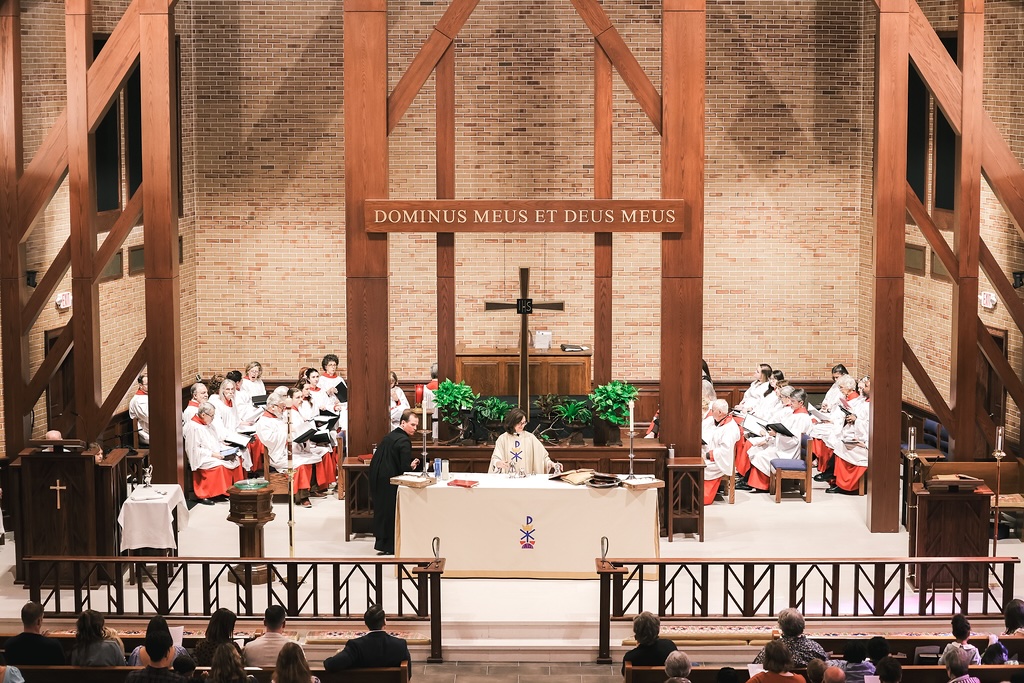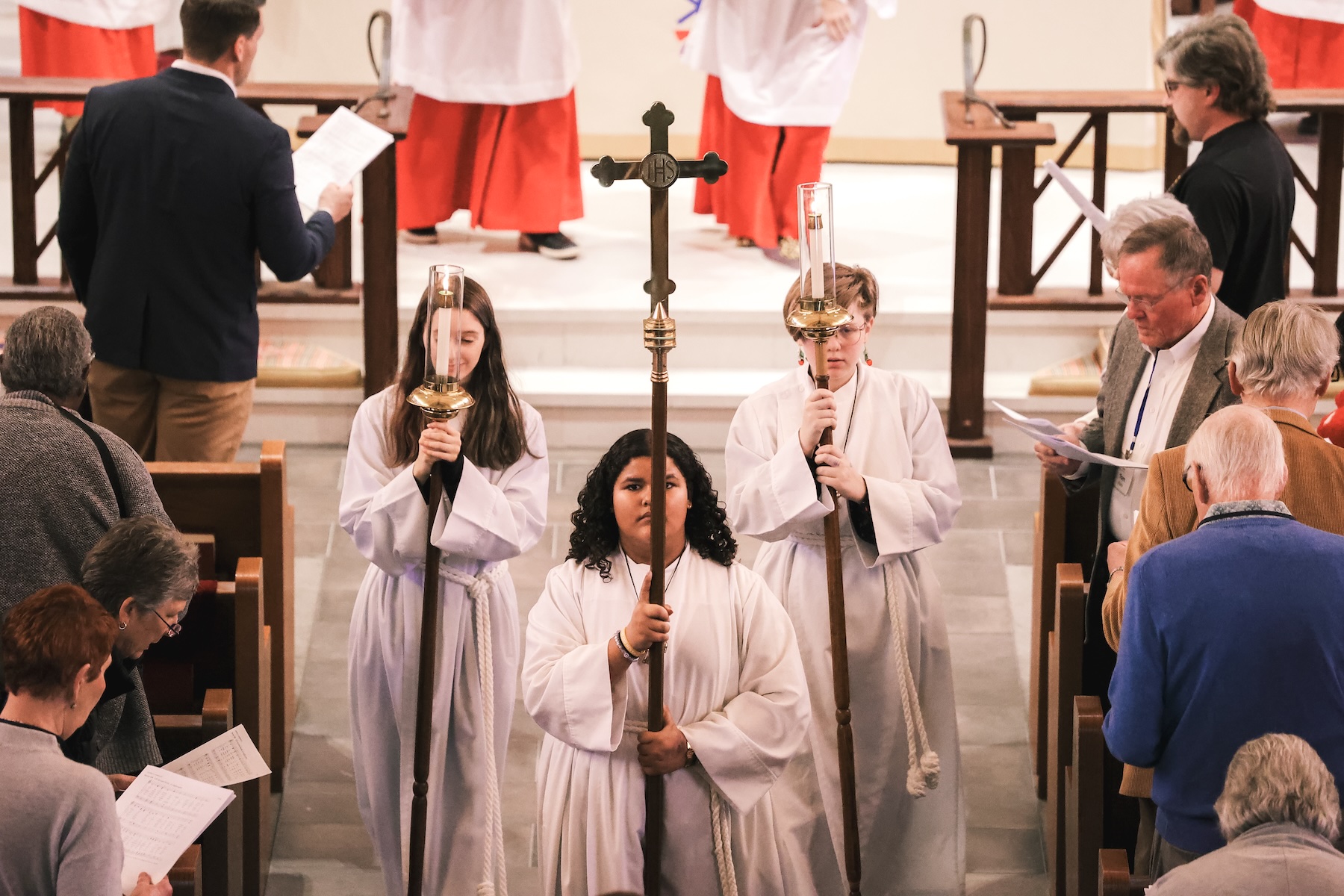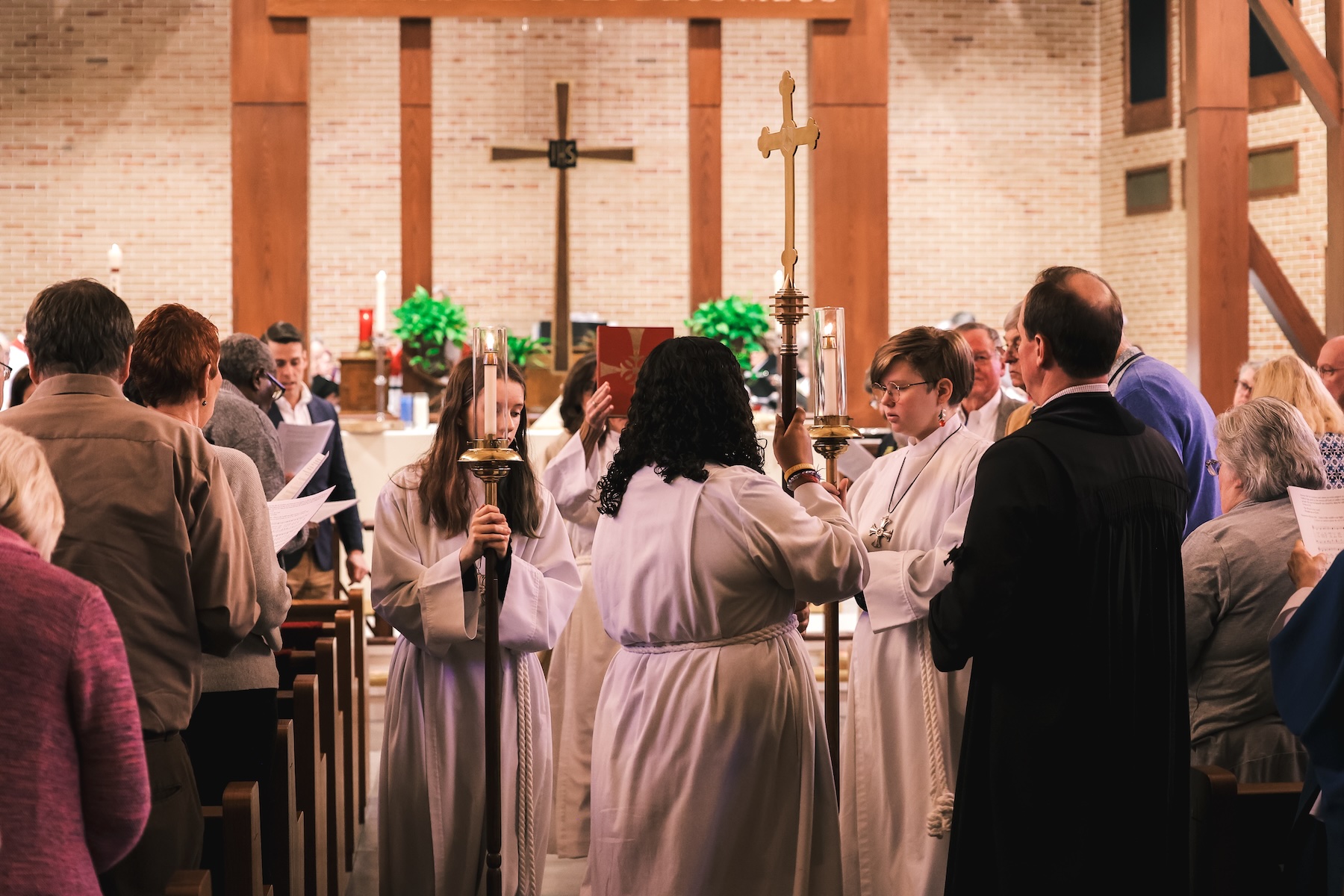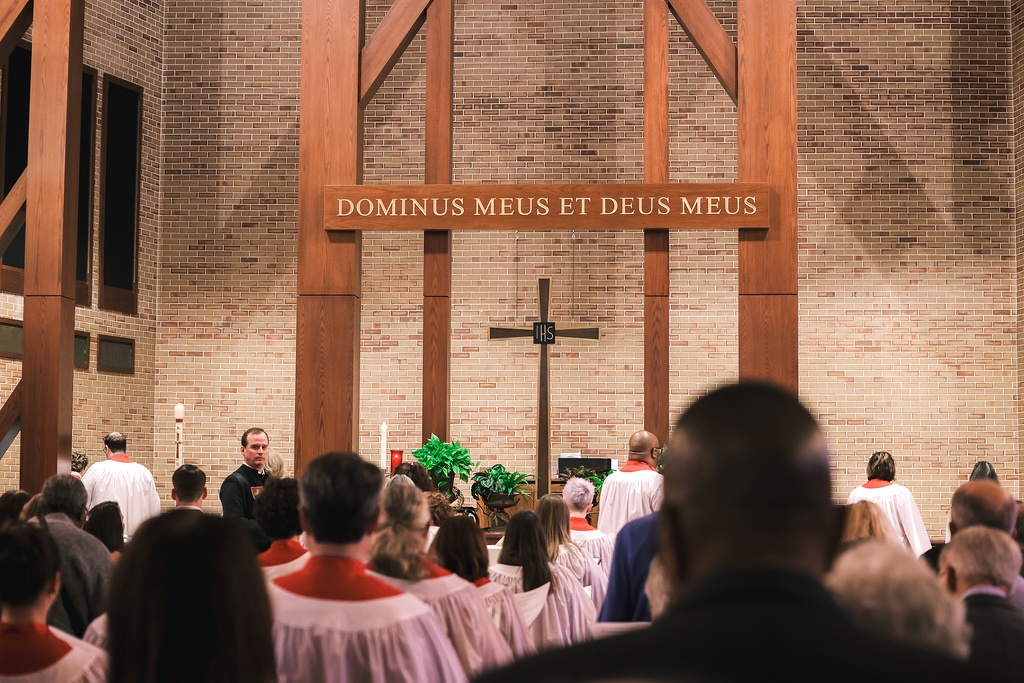To sing in the choir or join communion at St. Thomas Episcopal Church in Columbus, you needed the ability to climb: two stories to the choir loft, three steps to the altar rail.
Today those barriers are gone after the recent renovation funded by a capital campaign with the slogan “Making Room for All.” The new design makes level the sacred spaces that symbolize the passage between earth and heaven.
On Sunday, February 23, Bishop Rob Wright will dedicate the new nave at the 10:30 am service, with confirmation and reception into The Episcopal Church.
“St. Thomas really seeks and welcomes and values all people,” said the Rev. Grace Burton-Edwards, the rector. “It was important to us to eliminate barriers to actively participating in the life of the church, sharing in the sacraments and being a full part of the body. We wanted to do everything we could to make it more possible for all people to share and participate.”
Now communicants can easily receive at the altar rail, the A-frame nave holds 80 more people, and the 11 new parking spaces include four ADA-compliant spaces close to the chapel. At the back of the new altar, a choir of 45 with space for 60 or more sings from behind a reredos (ornamental screen). The old choir loft is a cozy spot for families with young children and groups of youth.
The project is a testament to the generous parishioners at St. Thomas. A $1 million unrestricted lead gift and a bequest helped inspire the congregation of 578. In a typical year, 160 parishioners pledge to support the church’s budget. That giving held steady as the parish made an additional 145 pledges to the capital campaign, Burton-Edwards said.
Those gifts enabled the church to avoid a construction loan and any debt from the project.
“Each of these major gifts provided further encouragement that this was the right time to complete this project that was envisioned by the building’s original architect 50-some years ago,” said Ron Wirt, who chaired the fundraising committee along with Travis Wade, Tanya Edwards-Jones and Norm Easterbrook.
“Being debt-free feels like an extra blessing in it all, that we’re not burdened,” Burton-Edwards added. “We were able to move forward prudently but also boldly due to the generosity of the congregation.”
Designed to transform
Built in 1958 with a design meant for expansion, St. Thomas has experienced significant growth in membership. By 2023, the average Sunday attendance was 226—up 65 percent from a decade before—and nearly $700,000 in plate and pledge offerings represented a 108 percent increase over the same span.
The membership began strategically planning ways to grow sustainably and align better with its mission. Along with the accessibility barriers, the original 270 seats weren’t enough; they needed 350. More parking was needed.
“I think America needs 1 million more Episcopalians,” said parishioner Andrew Meeks during the vision campaign. “A million more people committed to social justice, to helping the poor, to praying for the sick. A million more people who believe in equality and that everyone is deserving of God’s love… But it would present a challenge: we are going to need somewhere for them to sit!”
As the congregation explored accessibility solutions, they identified money-savers like more efficient lighting and HVAC systems. The renovation became a story that reflected who they are and where they are going.
A preview during construction
On the Sunday after Easter 2024, when the St. Thomas gospel lesson is read, they moved the worship space into the parish hall. Somewhat like a barn-raising, the nave-moving relocated all the pews, altar rail, piano and more.
“We had a fried chicken lunch, the Easter egg hunt with all the kids, and then everybody moved everything into the parish hall in one fell swoop,” Burton-Edwards said.
The main barriers to accessibility were in the chancel the area of the church set apart for the altar, lectern, pulpit, credence table, and seats for clergy. The chancel is typically raised somewhat above the level of the nave, where the congregation gathers. At St. Thomas, everything from the altar rail to the back wall was torn down and rebuilt.
The organ was overhauled by Cornel Zimmer Organ Builders, with the pipes and digital components reconfigured to create an antiphonal organ, enhancing the variety of sounds and the accompanying voices.
The rearrangement lasted for eight months of construction, and surprisingly previewed the power of making room for all.
“I thought it was going to be unpleasant or hard or that people wouldn’t want to come worship with St. Thomas during that time,” Burton-Edwards said. “Instead,the feeling was that something wonderful is happening here. And we hadn’t even realized it, but in the parish hall we were handicapped accessible. You knew that we were all on one level.”
The renovation led by Batson-Cook Construction and 2WR+Partners Architects also represented how the congregation identifies itself: “Like the apostle Thomas, we encounter the risen Christ in our lives together and find ourselves transformed.”
Symbols of home and God’s enduring presence
The monumental reredos screen, with diagonal wood pieces that suggest a house, was part of the redesign by John E. Joyner III, who focuses on liturgical design and planning for Episcopal parishes.. He is a Georgia Tech PhD architect with a doctoral minor in Anglican studies from Candler School of Theology at Emory University. His design of the pulpit, lectern, Communion rail, and credence tables echoes that of the patterns found in the reredos screen.
A church’s design is a metaphor for its theology, Joyner said, and St. Thomas rebuilt the experience of leaving the nave (earth) and going to the chancel (heaven) to receive holy communion. “We wanted to stress the whole idea of the transcendent and being in eternal communion with God,” he said.
The day after the certificate of occupancy was issued in early December, a funeral was held in the redesigned nave and Advent 2 was the following day.
On Christmas Eve, Burton-Edwards preached and connected the uncertainty of the Holy Family and of her congregation during construction. She pointed to the screen: “Do you see something that looks like a little house? Or maybe a stable? It is a sign that God is here to stay.”
The most eye-catching element of the design is a wooden banner emblazoned with five Latin words, “Dominus Meus et Deus Meus.” Burton-Edwards said these words of St. Thomas sum up what the congregation feels about the new space.
“My Lord and My God,” she said on Christmas Eve. “Thomas couldn’t believe what Jesus had done. And we can barely believe it ourselves.”
Before and After
Use the slider to see before (left) and after (right) photos.




